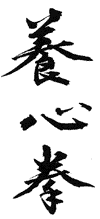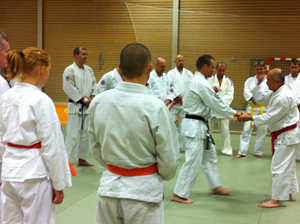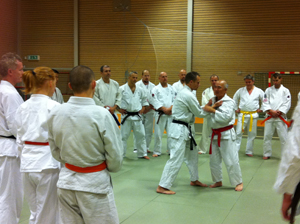
| Gasshuku with Soke Yamaue and Minami Jujitsu, 27-28 October 2012 |  Yoshinken |
||||
| I was invited by Minami Jujitsu to train with Soke Yamaue, within Yoshinken we are encouraged to be curious and gain understanding of other arts. This is the greatness of Sensei Marshall McDonagh´s Yoshinken where after years of training in our art of Taikiken to take the opportunities to make contact with other serious budo/wushu arts giving further perspective and development in our keiko. Now I was of course very curious about a Japanese budo sensei if there would be a keiko in techniques and physics, but it turned out that Soke Yamaue really was a budo sensei who implements both ki and meaning in the applications. Soke Yamaue had a lecture in the budo ranking system and also briefly explained ki, energy transfer and meditation in a good way. Since most of the students had a kyu grade there was of course a need for kihon training. Although I have a very long background in Kyokushin karate, judo and Taikiken I did not have any problem keeping up with jujitsu, it's not the techniques I take with me from this gasshuku it is the way to explain jujitsu techniques with meaning, application, flow, dimension and ki. Soke Yamaue made this in a brilliant way.
|
I must of course admit that I had a special feeling in my body the day after getting thrown and executing 50-60 kote-gaeshi and as many kubi-nage during the same hour of training. It was with a smile when I remember Soke Yamaue´s words "Pain is good". You should know that Soke Yamaue explained this in a very good way, and it's true. So it is with joy and warmth I thank Soke Yamaue and Minami Jujitsu (Sensei Antonio, Sempai Bertil) Sempai Allan (Nord Shaolin Kung Fu, Copenhagen) for the opportunity to train with a budo sensei at this level. I have over the years met many real budo sensei, they are all very different but similar in the sense that whatever the art, they are careful with the essence in budo and not only teaching technique and physics. Domo Arigato Åke Wall Taikiken Sensei |
||||
|
|||||


